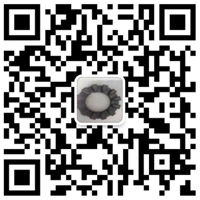magnets can cure dizziness
2015-02-28 10:28:13
Dizziness and spatial bewilderment can be an existence changing issue for interminable sufferers. Fortunately, new restorative examination utilizing capable magnets intends to change the way unsteadiness is dealt with. Specialists at Johns Hopkins University School of Medicine in Baltimore accept they have pinpointed the reason for unsteadiness by concentrating on the cerebrum, as per redOrbit.
Dizziness has a tendency to be connected with inward ear harm or changes to vision. Then again, Dr. Amir Kheradmand, a neurologist at Johns Hopkins, said it is really a locale of the mind that figures out if people see things as being up or down.
His exploration demonstrates a territory in the parietal cortex, which is in charge of handling tactile data, is joined with the wooziness or feeling of drifting that individuals may encounter. In the study, specialists said info from the inward ears and the eyes for upright observation can get to be intruded, yet regardless of this, the mind characteristically knows which heading is here and there.
"Our mind has this astounding method for knowing where we are in space, whether we are upright or tilted at an edge, regardless of the fact that it is totally dull and we can't see anything around us," Dr. Kheradmand said in an announcement. "This study recommends there's a little territory of neural tissue in the parietal cortex generously included in this capacity, providing for us a spot to begin pondering how we may have the capacity to treat individuals with perplexing discombobulation."
"Our mind has this astounding method for knowing where we are in space, whether we are upright or tilted at an edge, regardless of the fact that it is totally dull and we can't see anything around us," Dr. Kheradmand said in an announcement. "This study recommends there's a little territory of neural tissue in the parietal cortex generously included in this capacity, providing for us a spot to begin pondering how we may have the capacity to treat individuals with perplexing discombobulation."
Utilizing transcranial attractive incitement for discombobulation studies
So as to place this area of the mind that outcomes in wooziness or bewilderment, scientists utilized transcranial attractive incitement (TMS), Livescience reported.
This procedure permitted the analysts to fortify the mind utilizing flows from electromagnets to incidentally square cerebrum movement in the zone that was being examined. Amid TMS, research members would have TMS heartbeats transmitted in 40 seconds as they took a gander at tilted lines. After the methodology, all members purportedly felt their feeling of being upright was misshaped.
This procedure permitted the analysts to fortify the mind utilizing flows from electromagnets to incidentally square cerebrum movement in the zone that was being examined. Amid TMS, research members would have TMS heartbeats transmitted in 40 seconds as they took a gander at tilted lines. After the methodology, all members purportedly felt their feeling of being upright was misshaped.
Kheradmand said the procedure can be utilized to exhibit how intuitive observation can be controlled utilizing a method that is noninvasive. TMS is likewise answered to be easy. In the wake of seeing their prosperity with tests utilizing sound members, analysts plan to utilize this study to treat patients with interminable dazedness.
"We're energized that this could some time or another be a key to helping individuals who have discombobulation and spatial confusion to feel better," Kheradmand said.




 Copyright © 2016 Shenzhen City Ri Shengchang Magnet Technology Co., Ltd All Rights Reserved.
Copyright © 2016 Shenzhen City Ri Shengchang Magnet Technology Co., Ltd All Rights Reserved.